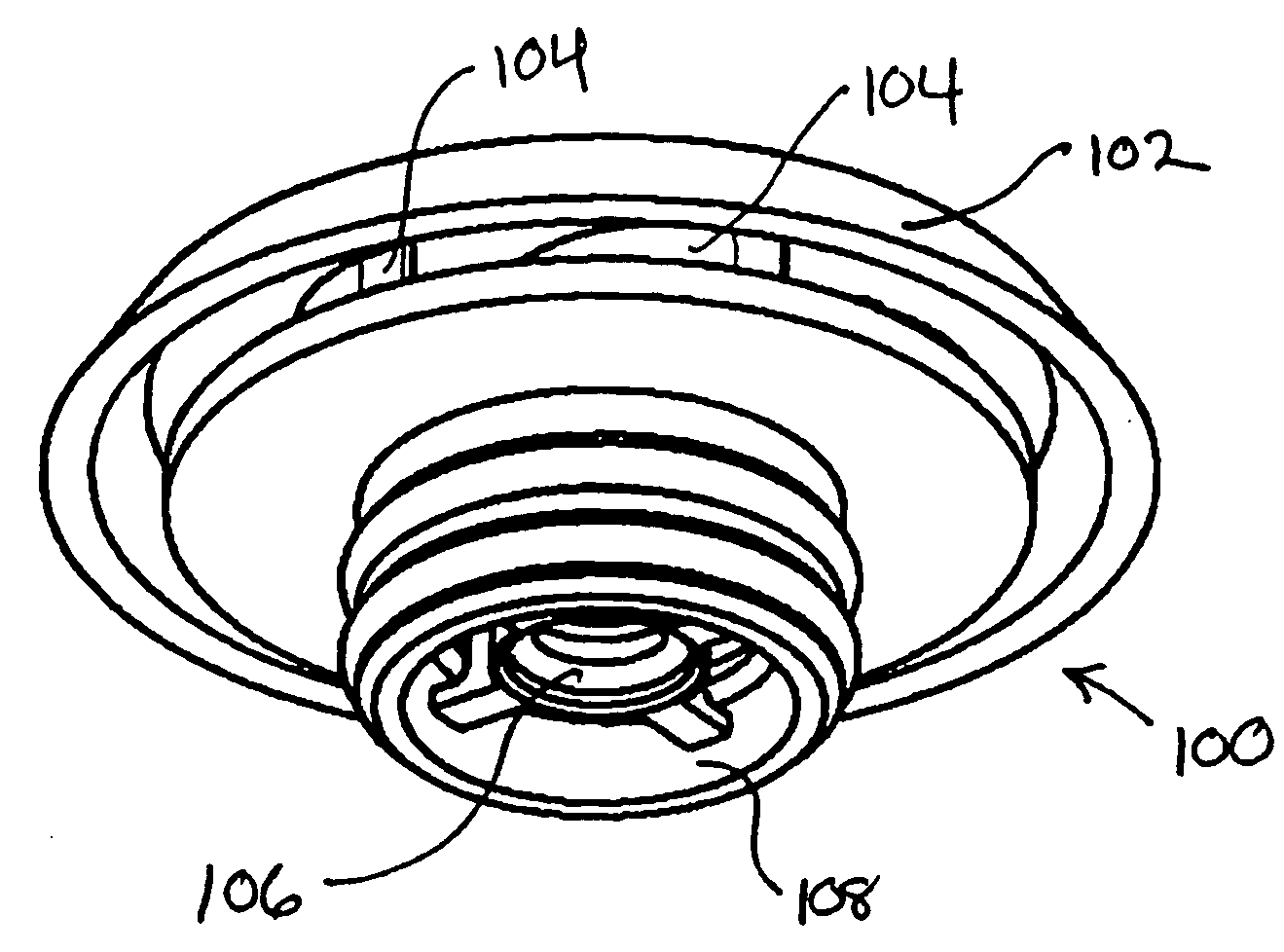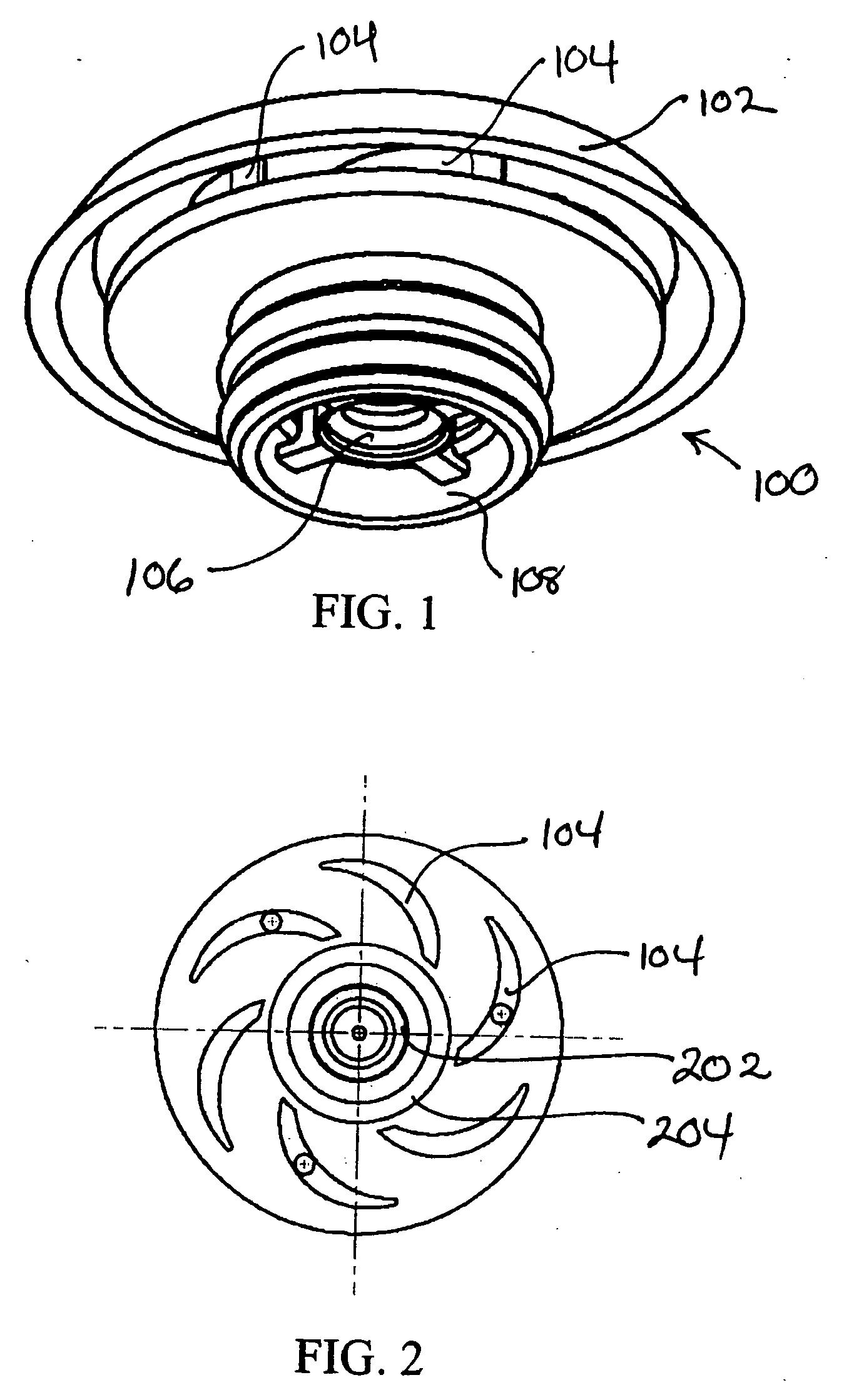Sanitization system and system components
a technology of sanitizing system and system components, applied in the field of sanitizing system, can solve the problems of affecting the health of users, chemical agents having deleterious effects on human health, persistent smell or corrosive effects on the skin of users, etc., and achieve the effect of easy adaptation
- Summary
- Abstract
- Description
- Claims
- Application Information
AI Technical Summary
Benefits of technology
Problems solved by technology
Method used
Image
Examples
Embodiment Construction
[0091] Generally, the present invention provides a sanitization system and individual components of such a system. The system allows sanitization of a fluid that may then be used to sanitize a wide variety of objects, such as foods or surfaces. Sanitization of an object may be accomplished within the container of the system, or a container holding the sanitized fluid may be removed from the base and transported to an alternative site of use.
[0092] A multi-use liquid sanitization system is described herein consisting of a base and at least one removable container. The base comprises a plurality of purification technologies for sanitizing water received from or flowing to the removable container. In particular, a multi-use sanitization system is disclosed which includes one or more containers in fluid communication with other system components. Components of the system include an ozone contacting device, such as a vortex-venturi or a sparger, for incorporating ozone into a liquid, an...
PUM
| Property | Measurement | Unit |
|---|---|---|
| Capacitance | aaaaa | aaaaa |
| Level | aaaaa | aaaaa |
| Reduction potential | aaaaa | aaaaa |
Abstract
Description
Claims
Application Information
 Login to View More
Login to View More - R&D
- Intellectual Property
- Life Sciences
- Materials
- Tech Scout
- Unparalleled Data Quality
- Higher Quality Content
- 60% Fewer Hallucinations
Browse by: Latest US Patents, China's latest patents, Technical Efficacy Thesaurus, Application Domain, Technology Topic, Popular Technical Reports.
© 2025 PatSnap. All rights reserved.Legal|Privacy policy|Modern Slavery Act Transparency Statement|Sitemap|About US| Contact US: help@patsnap.com



